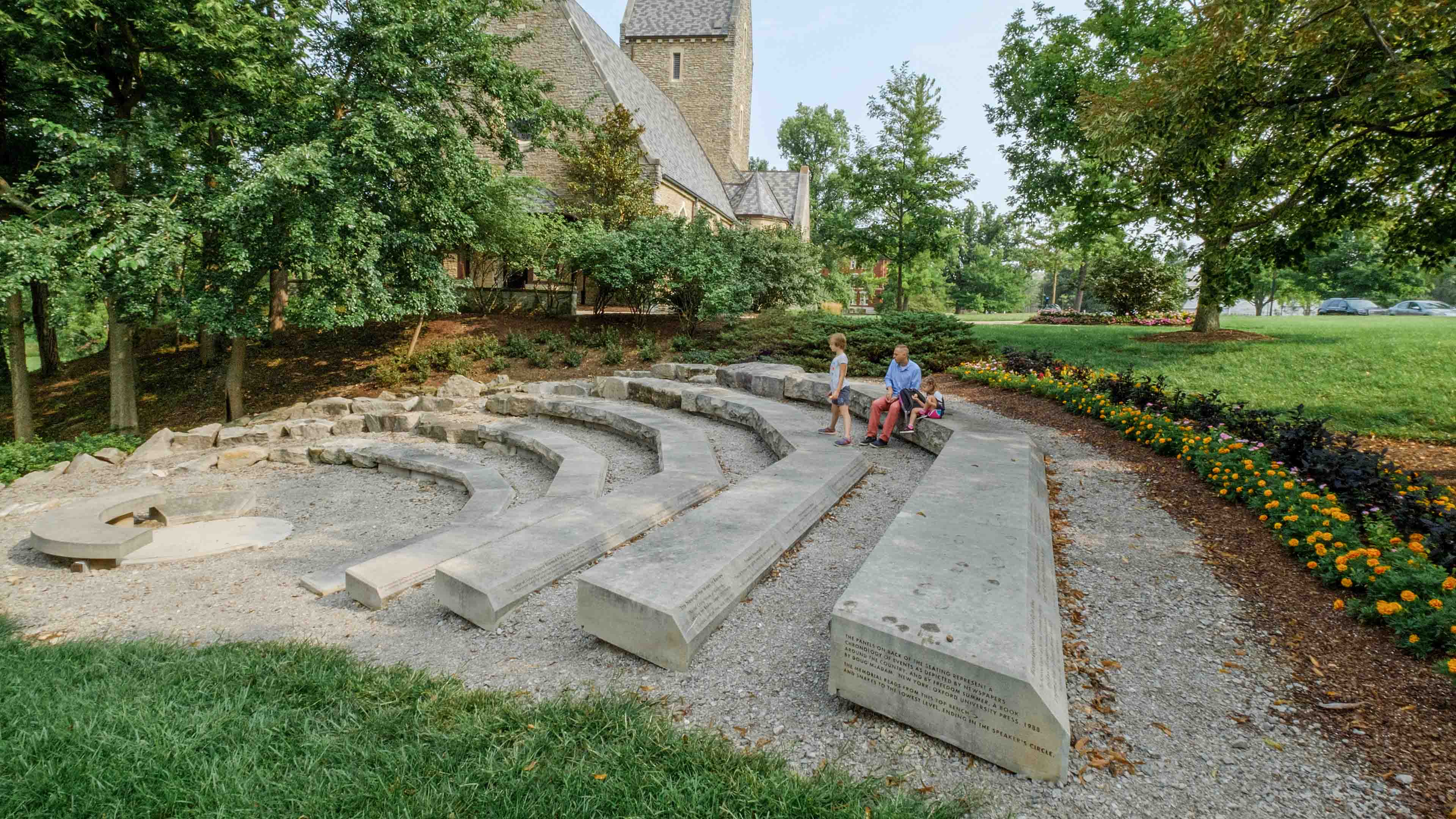Exhibit and accompanying lesson plans will teach history and themes of Freedom Summer to elementary school students
The Martha Holden Jennings Foundation recently awarded Miami University grant funding to develop a traveling exhibit to bring the story and lessons of Freedom Summer to elementary school classrooms.
“It’s important for children in Ohio to learn about their own history — about Freedom Summer and its goals,” said Jacky Johnson, University Archivist and principal librarian. “This is a way to tell that story while also teaching children about inclusion, respect for others, and diversity.”
Johnson and fellow librarians Kim Hoffman, Carla Myers, and Alia Levar Wegner are collaborating with faculty, staff, and students from the College of Creative Arts and the Miami University Art Museum on the project. The exhibit comprises vinyl panels, each focusing on a particular theme, and accompanying lesson plans and website to help students reflect and process each panel. The lesson plans are aimed at fourth and fifth-grade students.
“We chose this grade band because it is a significant point in life where students are becoming more aware of themselves and others. They are able to recognize how their actions can impact others,” said Stephanie Danker, an associate professor of Art Education. Danker and undergraduate students from her Introduction to Art Education course are creating the exhibit’s lesson plans.
The panels will each center around a different image, either selected from the Libraries’ existing Freedom Summer digital collection or newly acquired for the exhibition. Robert Wicks, the director of the Art Museum and a professor of Art, is lending his expertise to the project by identifying and acquiring new images and publishing rights. Informative text and graphics will join other elements from the collection like newspaper clippings and quotes to complement and provide context for each panel’s anchor image.
Zack Tucker, an assistant professor of Communication Design, is leading the design process for the panels. “We’re working with students in Communication Design and the Experience Design graduate program to create designs that are engaging to elementary school students,” said Tucker. “We also have to consider how the panels will support the lesson plans and the Art Education students who are creating them,” said Tucker.
Teaching from the past
Freedom Summer was a 1964 voter registration drive aimed at increasing Black voter registration in Mississippi. Its workers included Black Mississippians and hundreds of predominantly white out-of-state volunteers, who trained at orientation sessions held in Oxford on the campus of Western College for Women, now part of Miami University. During the registration drive in Mississippi, three civil rights workers — James Chaney, Andrew Goodman, and Michael Schwerner — were kidnapped and murdered by members of the Ku Klux Klan and local law enforcement agencies.
“One of the challenges of the story of Freedom Summer, because it does involve murder, lies in how you present that narrative to a younger audience without being too graphic or morbid,” said Wicks.
The exhibit’s creators hope to strike a sensitive and respectful balance that remains truthful to history while also teaching valuable lessons about activism, prejudice, civil rights, and social justice.
“The story of Freedom Summer is not just something that happened in the past; it’s something that can provide encouragement and enhancement to the dialog we continue to have today,” said Wicks.
While designing the lesson plans, Danker and her students see art as a crucial bridge between historical events and the larger themes they represent.
“There are so many emotions involved in Freedom Summer, and art is an excellent entry point. Themes derived from the art can connect these fourth and fifth-graders in a significant way to the content of Freedom Summer,” said Danker. “If the lessons were only about the history and not the larger ideas, they wouldn’t have the same lasting impact and personal connection for the students.”
With activities and content that meet both art and social-emotional learning standards for fourth and fifth grade, the exhibit will give teachers the flexibility to choose what fits their classes’ scope and sequence. The lesson plans will also be available to the public through a website.
“The important thing we’re trying to teach is: what do you do when bad things happen to good people?” said Johnson. “We’re teaching about inclusion, respect, and diversity.”
The group hopes to launch the exhibit locally with partners like the Talawanda school district in early February 2022 before expanding to other schools in the state, and potentially beyond.
